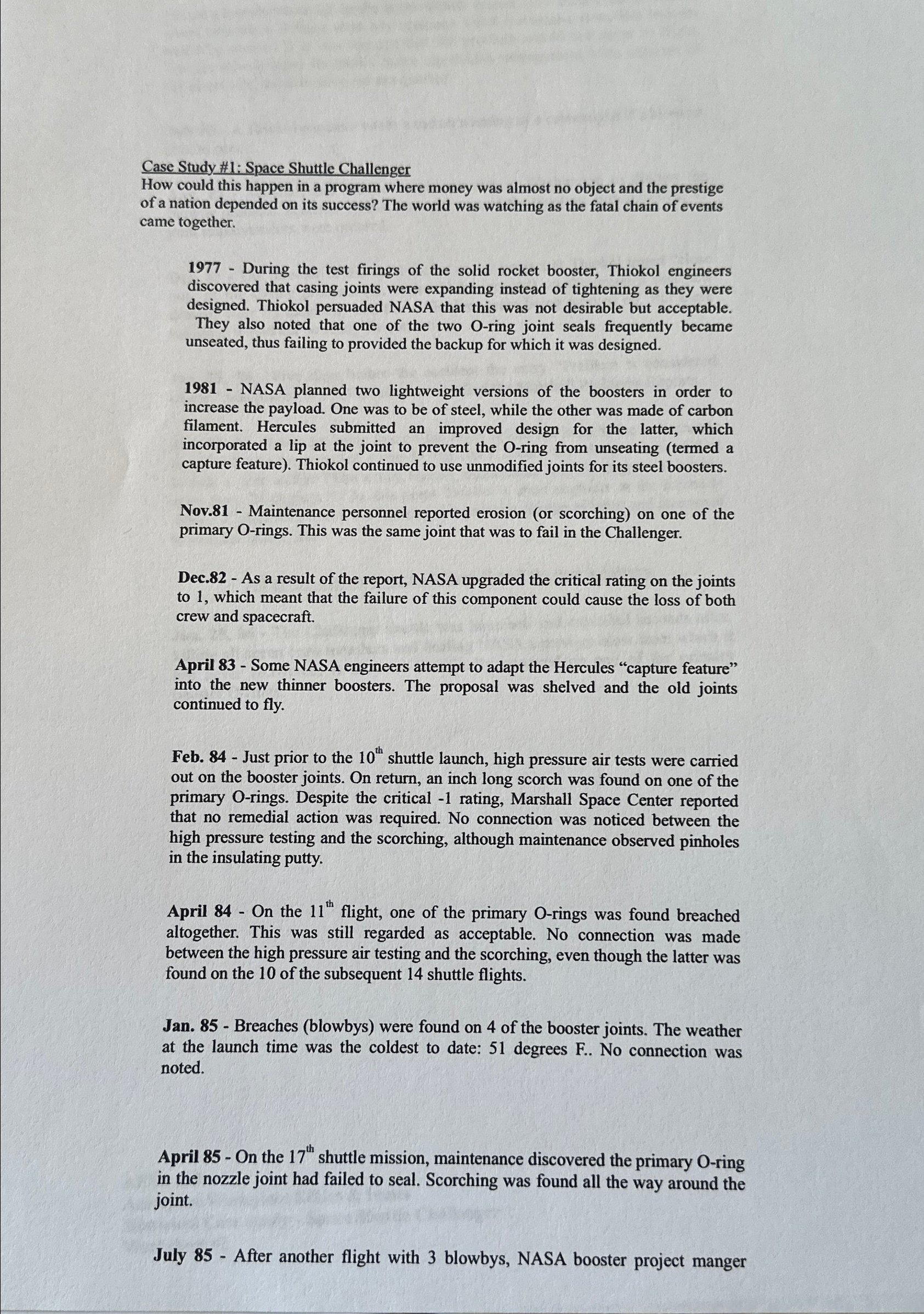Answered step by step
Verified Expert Solution
Question
1 Approved Answer
Case Study # 1 : Space Shuttle Challenger How could this happen in a program where money was almost no object and the prestige of
Case Study #: Space Shuttle Challenger
How could this happen in a program where money was almost no object and the prestige of a nation depended on its success? The world was watching as the fatal chain of events came together.
During the test firings of the solid rocket booster, Thiokol engineers discovered that casing joints were expanding instead of tightening as they were designed. Thiokol persuaded NASA that this was not desirable but acceptable. They also noted that one of the two Oring joint seals frequently became unseated, thus failing to provided the backup for which it was designed.
NASA planned two lightweight versions of the boosters in order to increase the payload. One was to be of steel, while the other was made of carbon filament. Hercules submitted an improved design for the latter, which incorporated a lip at the joint to prevent the Oring from unseating termed a capture feature Thiokol continued to use unmodified joints for its steel boosters.
Nov. Maintenance personnel reported erosion or scorching on one of the primary rings. This was the same joint that was to fail in the Challenger.
Dec. As a result of the report, NASA upgraded the critical rating on the joints to which meant that the failure of this component could cause the loss of both crew and spacecraft.
April Some NASA engineers attempt to adapt the Hercules "capture feature" into the new thinner boosters. The proposal was shelved and the old joints continued to fly.
Feb. Just prior to the shuttle launch, high pressure air tests were carried out on the booster joints. On return, an inch long scorch was found on one of the primary Orings. Despite the critical rating, Marshall Space Center reported that no remedial action was required. No connection was noticed between the high pressure testing and the scorching, although maintenance observed pinholes in the insulating putty.
April On the flight, one of the primary Orings was found breached altogether. This was still regarded as acceptable. No connection was made between the high pressure air testing and the scorching, even though the latter was found on the of the subsequent shuttle flights.
Jan. Breaches blowbys were found on of the booster joints. The weather at the launch time was the coldest to date: degrees F No connection was noted.
April On the shuttle mission, maintenance discovered the primary Oring in the nozzle joint had failed to seal. Scorching was found all the way around the joint.
July After another flight with blowbys, NASA booster project manger

Step by Step Solution
There are 3 Steps involved in it
Step: 1

Get Instant Access to Expert-Tailored Solutions
See step-by-step solutions with expert insights and AI powered tools for academic success
Step: 2

Step: 3

Ace Your Homework with AI
Get the answers you need in no time with our AI-driven, step-by-step assistance
Get Started


